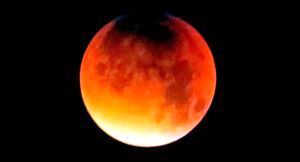Skygazers not over the moon about lunar eclipse
cloud cover obscured the longest total lunar eclipse this century leaving skygazers disappointed.

While the rare celestial event was visible from others parts of the world, people across Britain were unable to see the moon pass through the shadow of the earth due to cloudy conditions.
David Le Conte, from La Societe Guernesiaise’s astronomy section, was observing the phenomenon at their observatory.
‘It is the longest eclipse this century, one hour and 43 minutes of total eclipse if you could see the whole thing,’ he said.
‘It is a disappointment but there will be other eclipses.
‘This is the nature of astronomy – we are reliant on the weather.’
The next total eclipse will be in the morning hours of 21 January 2019.
‘There are at least two eclipses a year but you have to be on the right side of the earth to see them,’ he said.
‘A total eclipse is interesting to watch, particularly if the moon is in a good star field at the time.
‘They are beautiful because you have this blood red moon surrounded by stars.
‘Tonight it is in not such a strong star field.’
When totally eclipsed, the moon does not disappear completely but may take on a dark, deep red colour.
The exact shade it takes on depends on two things, said Mr Le Conte.
‘It depends firstly on whether the moon is going through the centre of the earth’s shadow and it depends on what is happening in the earth’s atmosphere at the time.’
The moon rose at 8.52pm in the south-east, already 20 minutes into the total eclipse.
The maximum central eclipse occurred at around 9.20pm, ending just under an hour later.
The moon gradually left the Earth’s shadow at around 12.30am, but appeared a bit fainter than usual because it was still in the penumbra of the shadow.





